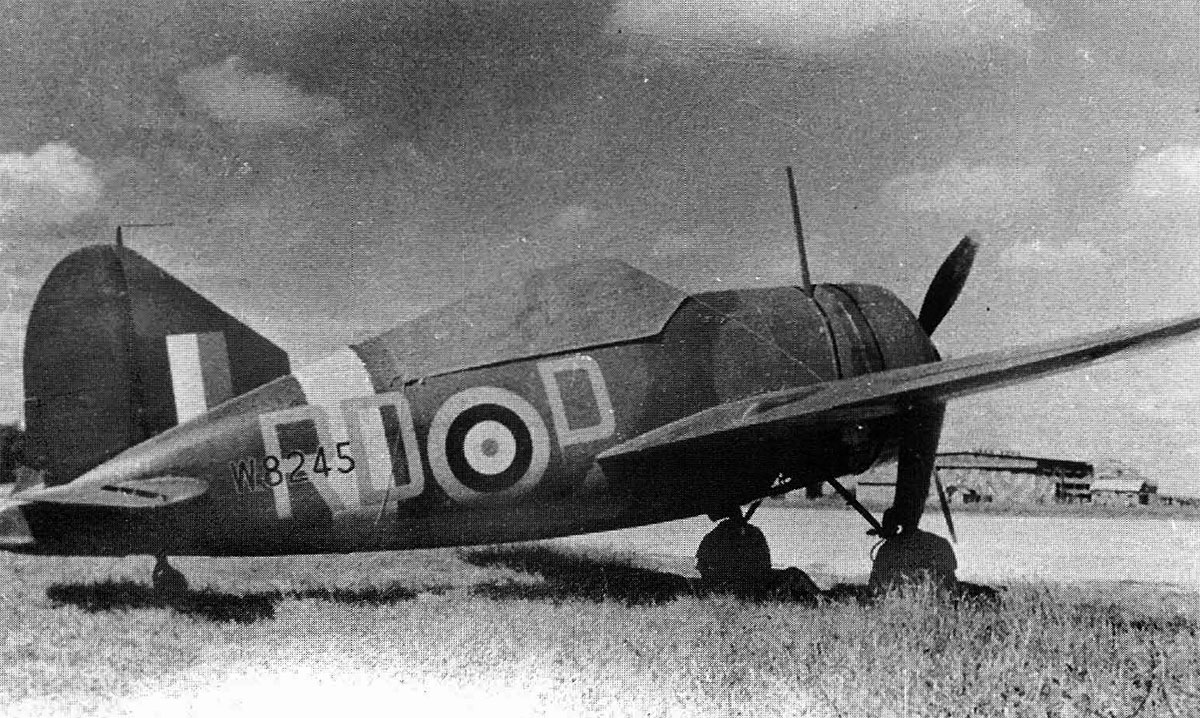Brewster Buffalo in British Service
Facing a shortage of combat aircraft in January 1940, the British government established the British Purchasing Commission to acquire U.S. aircraft that would help supplement domestic production. Among the U.S. fighter aircraft that caught the Commission’s attention was the Brewster. The remaining 32 B-339 aircraft ordered by the Belgians, suspended at the fall of France, were passed on to the United Kingdom. Appraisal by Royal Air Force acceptance personnel criticized it on numerous points including inadequate armament and lack of pilot armour, poor high-altitude performance, engine overheating, maintenance issues, and cockpit controls, while it was praised for its handling, roomy cockpit, and visibility. With a top speed of about 323 mph (520 km/h) at 21,000 ft (6,400 m), but with fuel starvation issues over 15,000 ft (4,600 m), it was considered unfit for duty in western Europe. Still desperately in need of fighter aircraft in the Pacific and Asia for British and Commonwealth air forces, the UK ordered an additional 170 aircraft.
In December 1941, Buffalos operated by both British Commonwealth (B-339E) and Dutch (B-339C/D) air forces in South East Asia suffered severe losses in combat against the Japanese Navy’s Mitsubishi A6M Zero and the Japanese Army’s Nakajima Ki-43 “Oscar”. The British attempted to lighten their Buffalos by removing ammunition and fuel and installing lighter guns to improve performance, but it made little difference.

67 Squadron
No. 67 Squadron RAF flew Brewster Buffalos in defence of Burma during the early stages of the Pacific War.



243 Squadron
On 12 March 1941, No.243 reformed at Kallang as a fighter squadron for the defence of Singapore. The shortcomings of its Brewster Buffaloes were soon apparent and when Japanese fighters came within range, the squadron suffered heavy losses and by the end of January 1942 was operating its surviving aircraft as part of a mixed force, the other Buffalo squadrons being in a similar state. Its identity was gradually lost to the evacuation of redundant personnel and by the time all fighters were withdrawn from the Singapore airfields, it no longer existed as a unit, having been disbanded on 20 January 1942.


711 Naval Air Squadron Fleet Air Arm



759 Naval Air Squadron Fleet Air Arm


804 Naval Air Squadron Fleet Air Arm

805 Naval Air Squadron Fleet Air Arm
805 NAS operated three Buffalos over Crete in early 1941. None of them saw action.









Being Evaluated at Boscombe Down





